
- Share via
The stereotype of the Italian nonna, or grandmother, attempting to feed you until you burst holds true — especially at the holidays.
No sooner had any family member walked through her door than my own nonna would lay out a tablescape of antipasti, already arranged and plated under a sheath of plastic wrap, waiting in the fridge for just the occasion: simply the occasion of your arrival.
Christmastime is when the Italian urge to feed others feels the strongest. The delis are packed with shoppers eyeing sopressata and provolone for their large family gatherings, but nothing says Italian holidays like the cookie spread — and the bakery case is almost always a bloodbath, customers clamoring to get the last, prized pignolo.
Buttery, baked, fried, dotted with maraschino cherries, thick with almond paste or littered with nuts or sprinkles, Italian cookies are a festive way to please a crowd, and the Garibaldina Society knows this. Earlier this month the oldest surviving Italian society in L.A. — and possibly the country — reprised its fundraising holiday market, Il Mercato, for the first time in years, calling on members to fill tables with a rainbow of cookies to be sold in pastel pink boxes. They sold out of thousands of cookies in less than two hours.
When I joined the Garibaldina Society, what struck me wasn’t just the shared love of food, which certainly exists; it was the characters and stories, all of which I’m sure would have entertained my own grandmother. This holiday season, some of these members and officers both past and present are sharing their generational cookie recipes so you can do as the Italians do: Feed your loved ones far too many cookies.
The Garibaldina Society is the oldest Italian club in Los Angeles. Younger members are giving it a new life — and you don’t have to be Italian to join.
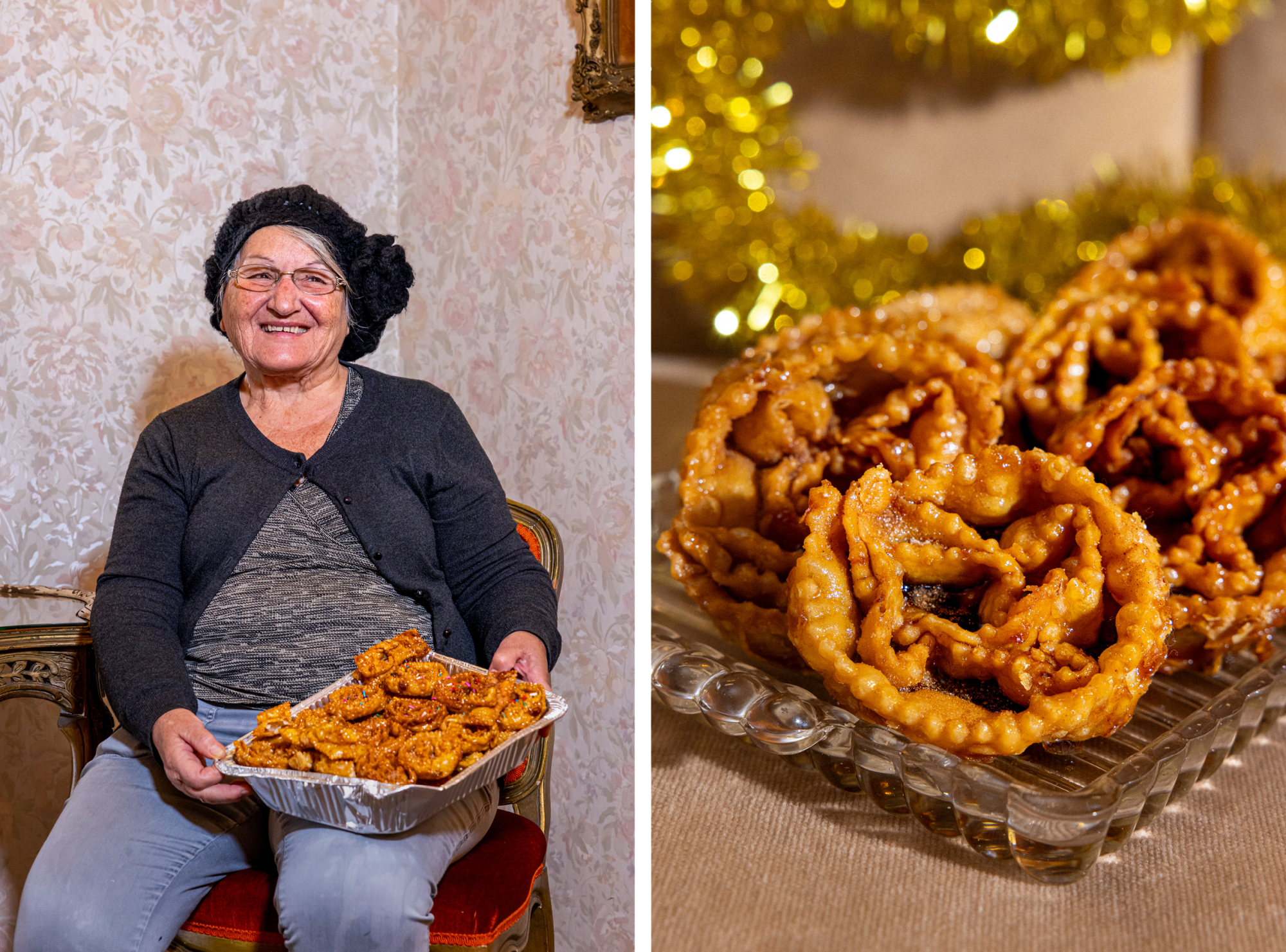
Member Michelangela ‘Lina’ Pompilio
Part fried indulgence, part tart grape sweetness, cartellate are an Apulian wonder. The pinwheel-shaped cookies traditional to the region can be found on most tables at Christmas. Fried ribbon-like cookies are slicked in vincotto, honey or some combination thereof for a sweet-savory bite. For Garibaldina member Michelangela “Lina” Pompilio, they’re an annual, lifelong endeavor and a reminder of her Bari upbringing.
“Always I make them for Christmas, all my life,” she said. “In the house, everybody was making things. You know, in Italy at the time, it was different than now [when] everybody goes [to] buy it. Nobody makes things.”
Her entire town would form and fry the cartellate for the holiday, and she recalls her grandmother, her mom and her aunt all gathering in the kitchen to make the cookies each year. Depending on who made them, they’d always turn out a little differently — though she can’t say whose version was best. Pompilio began helping her family knead and fold and fry the cartellate as a child; traditionally, townsfolk would harvest grapes, stomp them, carry the liquid and cook it down into grape must, which forms the glaze of the fried cookies.
When Pompilio first moved to the U.S. in 1965, she stomped and made her own vincotto, a slow-cooked reduction of grape must. Years later she realized she could simply buy jarred grape molasses, which she mixes with honey upon request from her husband, Giuseppe, who doesn’t like the glaze too dark. Making a batch of cartellate can take all day, or multiple days, as the dough can chill overnight; you can enlist friends to make them, but the Italian urge to host and feed them while they’re helping is sure to strike. Pompilio says she finds it easier to just do it all herself.
She and her husband joined the Garibaldina Society in 2014. A lifelong tailor who worked constantly, she hoped to become a member for years but waited until retirement age, when she could really enjoy all the club has to offer. Now she and Giuseppe play bocce during the week and occasionally attend dinner dances with their fellow members.
“It’s like your family,” she said. “You talk with everybody, it’s not like you come here and you’re a stranger.”
Michelangela 'Lina' Pompilio's Cartellate

Incoming First Vice President Lauren Veca
There’s an argument to be made that the rainbow cookie is the most iconic item in an Italian bakery case. The tricolor treat stacks three layers of red, green and white (or pale yellow) cake to resemble the Italian flag. Then the whole shebang is topped with chocolate. Preparation in multiple phases can be spread across days — including making the base, separating and coloring each layer and compressing the cookies — they’re a labor of love but also a crowd-pleaser.
To the Garibaldina’s incoming first vice president, it’s worth making a batch or two at the holidays every year. But Lauren Veca, who also serves as the club’s bar manager and cooks homemade meatballs for the monthly Pasta Platter dinner dance, always calls them by another name, thanks to her nephew.
“One of the things he said about me was that I was fancy,” she said. “On one particular day, when the cookies were made, he came down and he’s like, ‘Oh my God, look at these cookies! These are Versace cookies!’”
They are, in some ways, a little fancy. While some recipes call for a cakier, fluffier base, Veca’s “Versace” cookies use more marzipan, resulting in a thicker, chewier, more luxurious texture. She learned to make them from her Brooklyn-born, Apulian-heritage grandmother; years later, she took over making them for the family.
These “Versace” cookies hold a special place in the Veca household: On Christmas Day 24 years ago she was rushed to the hospital to give birth to her son, Luca — missing out on the family’s annual batch of rainbow cookies in the process. Now she bakes them every year to make up for the batch she missed, and in honor of her son’s birthday.
Lauren Veca's 'Versace' Rainbow Cookies
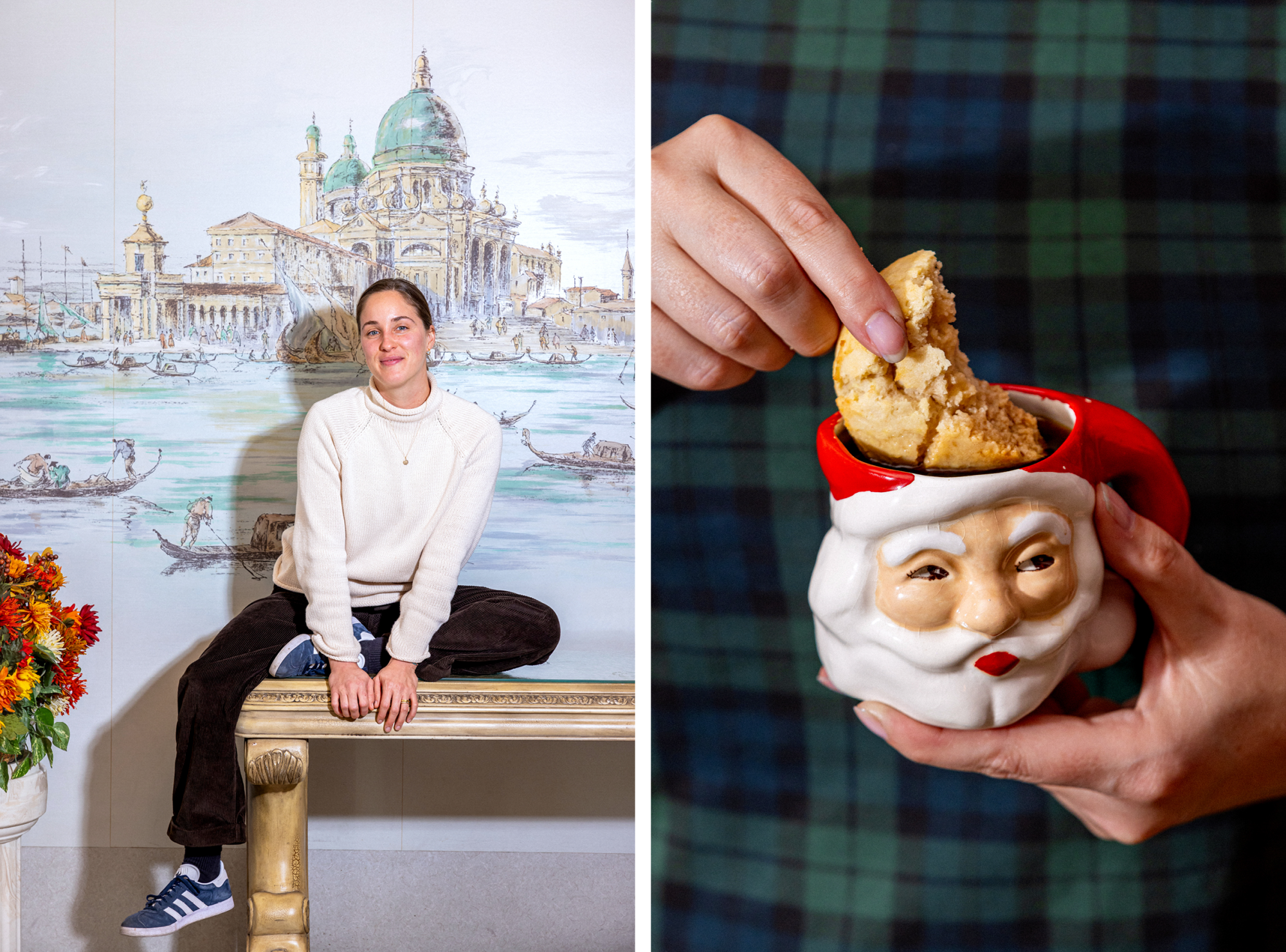
Member and chef Amanda Lanza
Anyone from an Italian family can probably tell you theirs is full of characters — and, odds are, one is the matriarch or patriarch sitting at the head of it all. For professional chef and Garibaldina member Amanda Lanza, her family’s matriarch and the holiday cookie she baked every year were both so iconic they garnered their own nicknames.
Antonina Di Maria, while not technically related by blood to Lanza, was the head of multiple branches of the family to such an extent that Lanza and generations of cousins refer to her as The Nonna. She lived to 104, and the Sicilian baked her famous cookie — dubbed “The Brick” for its hard consistency — until roughly the age of 102. Even after she lost her vision, she continued making it every Christmas, putting her hand to the flame to test whether the oven was on.
A riff on a milk cookie, a traditional house cookie or biscottoni, Di Maria’s “Brick” was initially made with real lard, but upon moving to America, plant-based shortening such as Crisco became a handy substitution. It’s thick, dense and laden with vanilla, and requires ubiquitous and relatively inexpensive ingredients.
“This specific cookie is economically accessible for every family, and especially when you’re talking about a woman from the early 1900s,” Lanza said. “For me, that super utilitarian cookie symbolizes a way to bring some sweetness into a place that was reserved for higher classes.”
As the chef-founder of the Garibaldina’s bimonthly event series Bar Bene, Lanza often can be found in the society’s kitchen trying to preserve some of the recipes and culinary know-how of its older members and chefs. When it came to “The Brick,” Lanza extended the effort to her own family’s recipe. One of Di Maria’s daughters-in-law passed it on and Lanza tweaked it slightly, resulting in a softer center — and a less brick-like “Brick.”
Since Di Maria’s death roughly a decade ago, no one had stepped into the role of reviving “The Brick” for the holidays until Lanza volunteered to bring it back. She suspects, based on multigenerational family interviews, that “The Brick” wasn’t always so dense, and that the cookie’s quality declined during The Nonna’s later years. This Christmas Lanza, her parents and cousins will all get to taste what she believes is a return to “The Brick” of earlier years and toast to The Nonna.
Amanda Lanza's 'The Brick' cookies
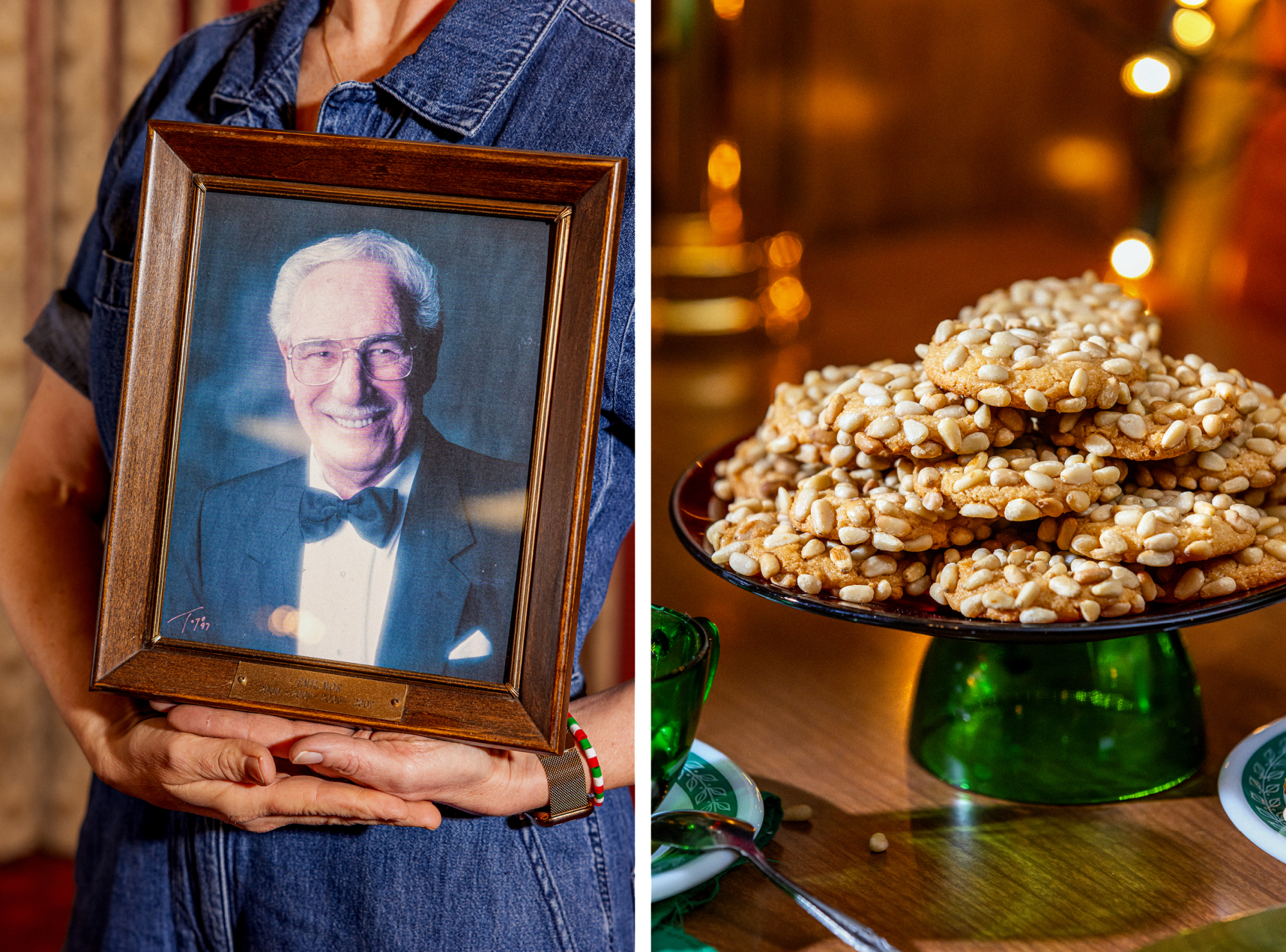
Former President Emil Mor and former Secretary Marie Mor
It takes a special kind of leader to keep the Garibaldina Society running. Since 1877 it’s seen thousands of members and enough event coordination to drive a person pazzo, but almost no one has steered the ship with such aplomb as Emil Mor. The two-time president — from 2000 to 2001 and 2006 to 2007 — helped lead the social club with his wife and the Garibaldina’s former secretary, Marie Mor, at his side.
“He would go around and talk to everybody, and she was very glamorous,” said retiring secretary Cordelia Sherland. “They were very embracing and very kind, and incredibly generous. And they were really beloved, you know? They were really classy people.”
Sherland and her husband, Sid, joined in 2011 after years of visiting as guests and with strong encouragement from Marie Mor. The Mors became close friends and provided them with their how-to for cookies, a recipe Sherland has guarded for years. Chewy, delectable and littered with pine nuts, or pignoli, the Mors’ amaretti cookies are a pitch-perfect example of the iconic Sicilian treat. Egg whites help keep the almond paste airy and provide a lightly crackling crust, a must for any pignolo.
Sherland remembers the late couple always cooking, both together and separately; Emil could frequently be found in the Garibaldina’s kitchen, often stirring a batch of his famed red sauce. Highly sociable and fondly remembered leaders of the society, Emil’s portrait can still be found in the Hall of Presidents, while Marie is immortalized in the minds of members for her stylishness and red hair.
Marie and Emil Mor's Pignoli
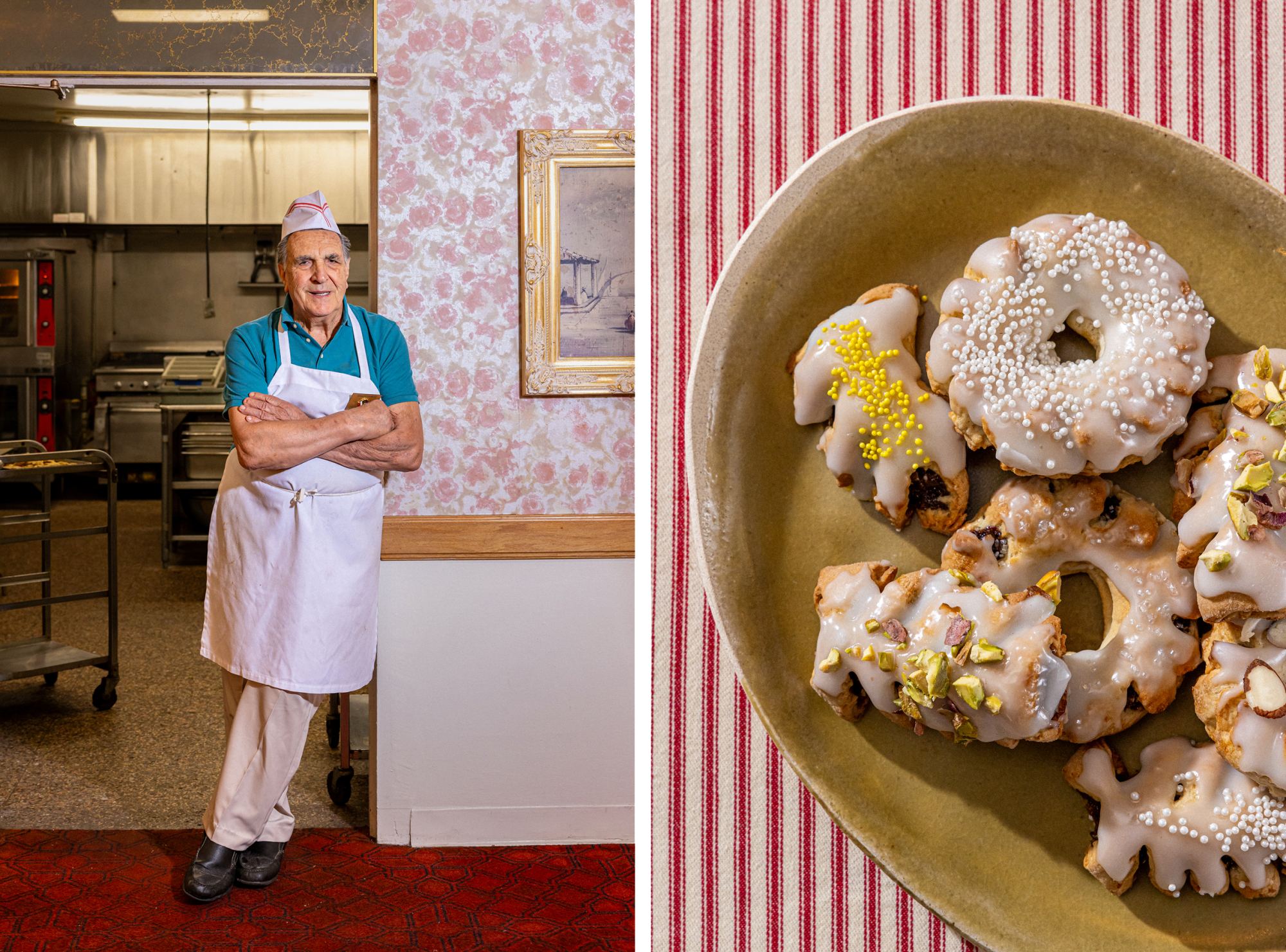
Member and chef Ignazio Vivirito
When it comes to Sicilian Christmas cookies, cuccidati reign supreme — and at the Garibaldina, Ignazio Vivirito is their king. Pop your head into the kitchen most weekdays and you’ll find the lifelong baker and chef whipping up bowtie pasta with long-sautéed broccoli with onions or a baked-fresh batch of sfincione, feeding the bocce teams and anyone else who happens to be on site. During the holiday season, however, Vivirito’s specialty is the revered fig cookies that tuck a rich, homemade fruit jam into a buttery crust and glaze it all with sugar and festive sprinkles.
He’s made cuccidati at Christmas every year of his life since the age of 10, when he got his first job at a bakery in Sicily. With more than 70 years of practice he knows the cookies’ method quite literally like the back of his hand, measuring ingredients using the length of his fingers. He churns them out dozens at a time, slicing patterns through the dough with a custom aluminum roller he made, and though one can make the fig filling with soaked dried fruit, when possible, he prefers to craft his out of fresh watermelon rind.
Vivirito, born in Sicily, came to the U.S. in 1958. When he arrived in New York City he continued his cooking at Jewish, Italian and Polish bakeries, and when he reached California in 1980, he picked up work in supermarkets, delis and Italian restaurants in L.A. and Orange County, as well as the Beverly Hills Hotel. Vivirito found the Garibaldina Society a few years later and attended as a guest but didn’t join until 2010. Shortly thereafter he started cooking for the masses. Now everyone clamors for his cooking as soon as it’s doled out at the club, but he recalls it wasn’t so long ago that he had a hard time finding an audience for his food.
He remembers when Americans didn’t want Italian cookies such as cuccidati or cannoli, citing them as foreign or too sweet. “But times,” he said, “have changed.” Now everyone wants a piece, or at least a holiday cookie.
Ignazio Vivirito's Cuccidati (Sicilian fig cookies)
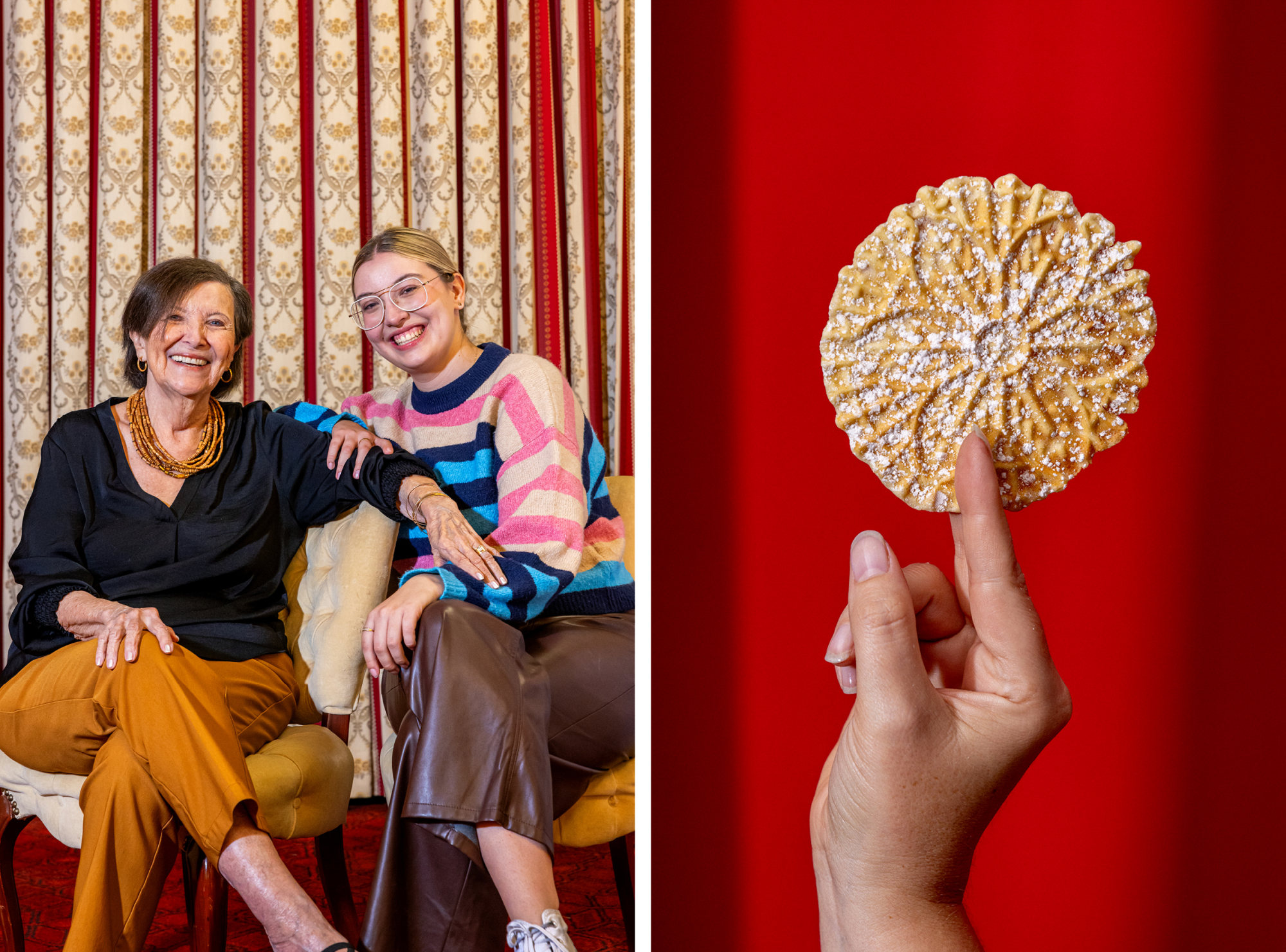
Members Lupe and Cecilia Del Rivo
Though they can be enjoyed year-round, the iconic wafer-thin, snowflake-patterned pizzelle are especially ideal at the holidays — and all the more festive when sprinkled with powdered sugar. Representing one of the most volunteer-driven intergenerational families at the Garibaldina, grandmother-and-granddaughter duo Lupe and Cecilia Del Rivo have been pouring their simple batter into the pizzelle iron together for years, using the cookie-making as bonding time.
“We usually make them on her dining room table with the TV on,” Cecilia said, “and we gossip a little.”
They riff on a recipe from Lupe’s sister, who heavily flavors the cookies with anise, which is traditional, but Lupe and Cecilia ditched the anise and “Americanized them” with vanilla instead. Because one batch makes roughly 4 dozen cookies, the pair break out the pizzelle irons — akin to waffle irons — for large family gatherings: always at Christmas and Easter, and sometimes when bringing a dish to Thanksgiving or a New Year’s party.
Cecilia grew up sitting on the benches of the club’s indoor bocce court, watching her family play on Tuesday and Thursday afternoons. She joined earlier this year and visits when she’s home from college, often helping serve ice cream at the club’s monthly Pasta Platter dinner events. With her father acting as the Garibaldina’s treasurer, and with grandparents who joined in 2007, she’s a third-generation legacy member. Lupe, now 85, helps to fold the napkins for dinner dances and other events.
“The club has been great,” Lupe said. “We come, we play bocce, we play a little poker, we come to dances — it gives us a lot of outlets and a lot of fun.”
Lupe and Cecilia Del Rivo's Pizzelle
More to Read
Eat your way across L.A.
Get our weekly Tasting Notes newsletter for reviews, news and more.
You may occasionally receive promotional content from the Los Angeles Times.


















